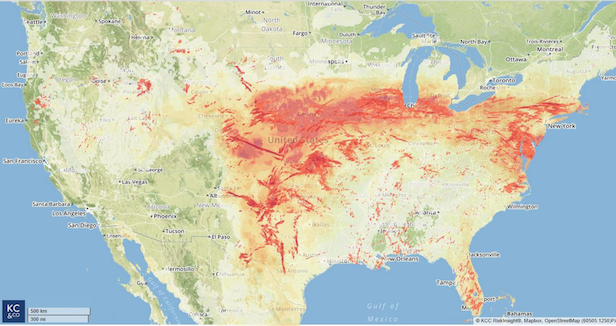
A “ring of fire” weather system that took place earlier this month is expected to generate $2.5 billion in insurance claims to residential and commercial properties and automobiles, according to a new report from Karen Clark and Company.
The extreme weather event created damage from hail and wind, and affected most states along the east side of the Rocky Mountains, with the most damage occurring in the Midwest, Northeast and Mid-Atlantic regions.
The report says 12 states — Colorado, Connecticut, Illinois, Indiana, Iowa, Kansas, Maryland, Michigan, New York, Ohio, Pennsylvania, and Virginia — will likely experience insured losses in excess of $100 million each.
Recommended For You
Want to continue reading?
Become a Free PropertyCasualty360 Digital Reader
Your access to unlimited PropertyCasualty360 content isn’t changing.
Once you are an ALM digital member, you’ll receive:
- Breaking insurance news and analysis, on-site and via our newsletters and custom alerts
- Weekly Insurance Speak podcast featuring exclusive interviews with industry leaders
- Educational webcasts, white papers, and ebooks from industry thought leaders
- Critical converage of the employee benefits and financial advisory markets on our other ALM sites, BenefitsPRO and ThinkAdvisor
Already have an account? Sign In Now
© 2025 ALM Global, LLC, All Rights Reserved. Request academic re-use from www.copyright.com. All other uses, submit a request to [email protected]. For more information visit Asset & Logo Licensing.








